Standout Exhibits at Embedded World 2024
Earlier this month, I had the pleasure of traveling to Nuremberg, Germany to attend Embedded World. If you have not heard about it before, Embedded World1 is the largest trade show in the embedded systems industry. This year, over 35,000 people attended and 1,100 businesses exhibited at the Nuremberg Messe.
Embedded World is an amazing opportunity to learn about the latest developments in the industry, and to meet the people behind the technology. Semiconductor manufacturers, software vendors, engineering firms, module makers and component suppliers all attend, show off their products, and give talks to present their latest thinking and innovation. It doesn’t hurt that Nuremberg, where it is held, is a beautiful city with good food, good beer, and great public transit.
I spent a lot of time at the Memfault booth of course. It was thrilling to meet so many engineers who wanted to learn more about observability. We welcomed hundreds of people at our booth, with 4 demo stations in active use throughout the 3 days of the show. The Memfault socks we brought as booth swag were a big hit.
In this post, I will share the technologies I saw at Embedded World 2024 that I was most impressed by. I was lucky to have plenty of time to walk from booth to booth, and had some fantastic conversations that I hope you will find interesting.
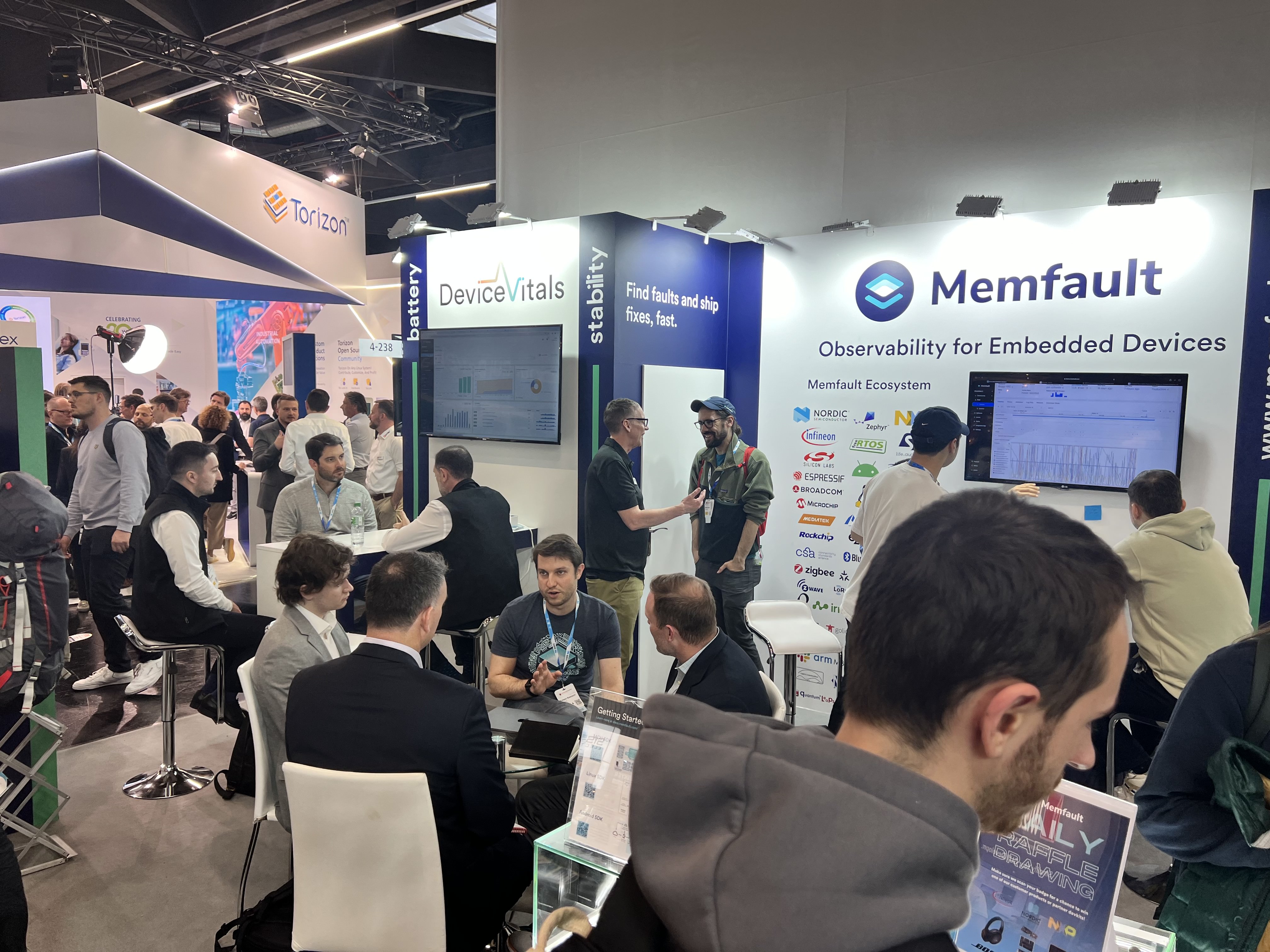
Table of Contents
Rust, front & center
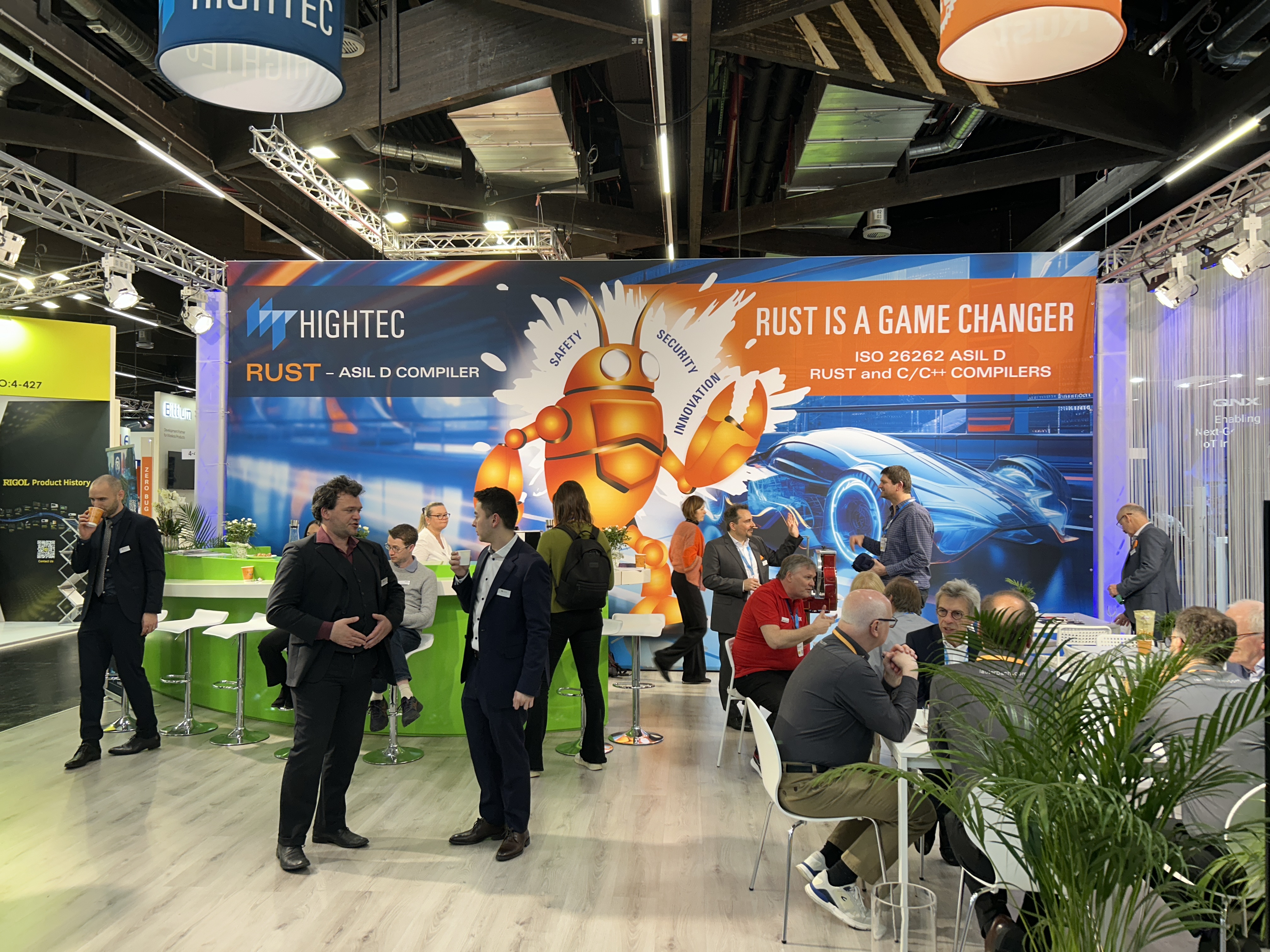
This year, Rust seems to have broken through in the embedded community. Nowhere was it more evident than at the Hightec2 booth. For those of you who are not familiar with Hightec, they sell qualified builds of open source compilers (e.g. GCC) for safety critical industries such as automotive. This year, they had a HUGE crab-inspired mascot in the background of their booth to announce the availability of their ASIL D qualified Rust compiler. I’m excited to see serious ecosystem players like Hightec make such a huge bet on Rust, as I believe it is a better language and runtime for the embedded world.
This was not the only Rust I saw at the show. For example, I had a great chat with engineers at Bluewind3 about their use of Rust. We also had many booth visitors ask us whether or not Memfault supports Rust - we do and were glad to share our experience building some of our SDKs in Rust at Memfault. We’ve known for a while that Rust is growing in use in embedded - several of our customers use the language in their products - but it was encouraging to hear so much about it at a serious industry event.
RISC-V continues to gain popularity

RISC-V had a huge booth hosting multiple ecosystem players. SiFive was there of course, but I found it notable to see industrial heavyweights such as Siemens exhibiting at the RISC-V booth. There is a lot of energy in the RISC-V ecosystem, and we’re starting to see some of our customers use RISC-V chips in their products. While I continue to be a big fan of the ARM architecture, it’s great to see alternatives develop, especially open source ones.
I’ve especially been following the e-trace standard (naturally) which offers a number of trace facilities for RISC-V systems. Siemens gave a great presentation at the show about their use of the standard.
Everybody wants to do AI
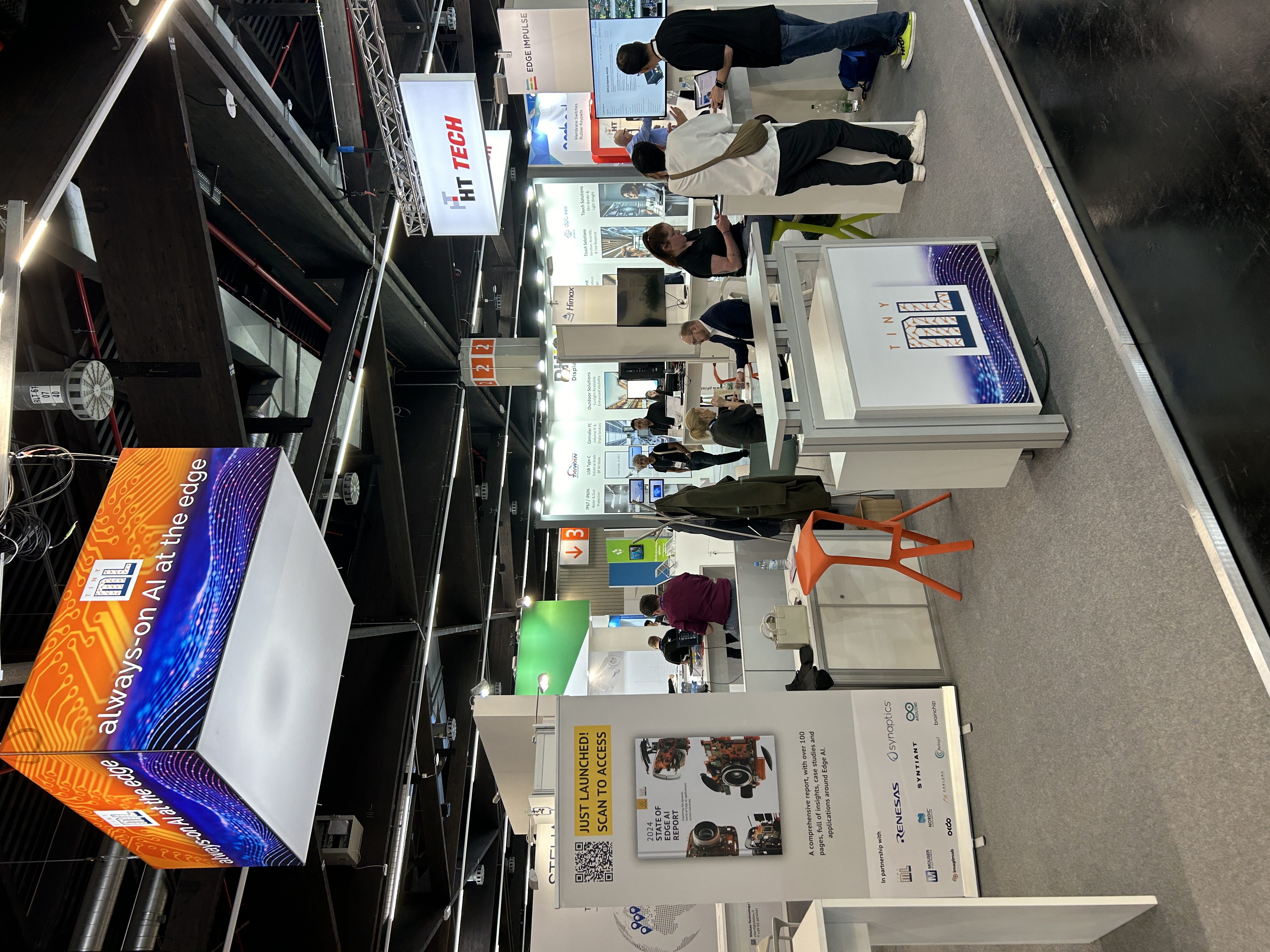
Perhaps the most popular topic of conversation at Embedded World this year was, unsurprisingly, AI at the Edge. The TinyML foundation (pictured above) is leading the charge, bringing together exciting startups such as Edge Impulse and Imagimob that make it easy to deploy models to your devices. The foundation released the 2024 edition of their “AI at the Edge” report4 which they were distributing at the show. It’s a great read!
Everyone else was talking about AI too! Semiconductors are releasing new development kits geared towards AI such as the Infineon PSoC 6 AI EK5, software vendors are integrating AI features, and research labs are showing off cool new use cases for AI such as power efficient Atrial Fibrillation detectors for healthcare use cases.
Zephyr is winning hearts & minds
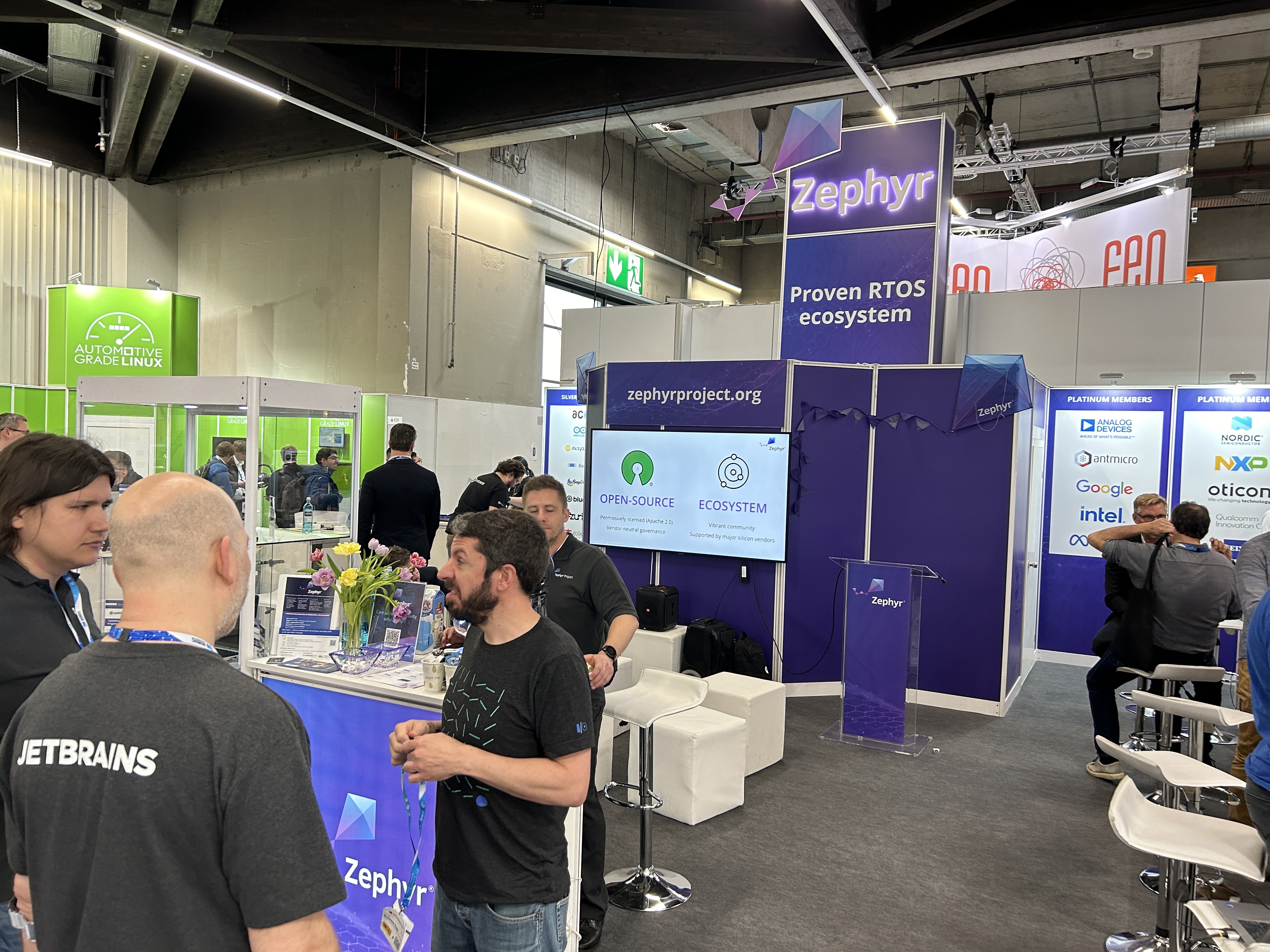
Every year, the Zephyr booth is bigger, showing off more sponsors, and busier. 2024 was no exception. I’m thrilled to see the energy behind this open source project with an ecosystem of chips, tools, and libraries coming together around it.
Zephyr may be the most active open source project in the embedded space with over a thousand commits every month from hundreds of authors. As a member of the Zephyr project, Memfault got to sit at the Zephyr booth each day to chat with attendees. We spoke with various embedded developers and semiconductor companies excited about transitioning to Zephyr, or in the case of semiconductor companies, adding support for Zephyr in their SDKs.
Exciting new startups are sprouting
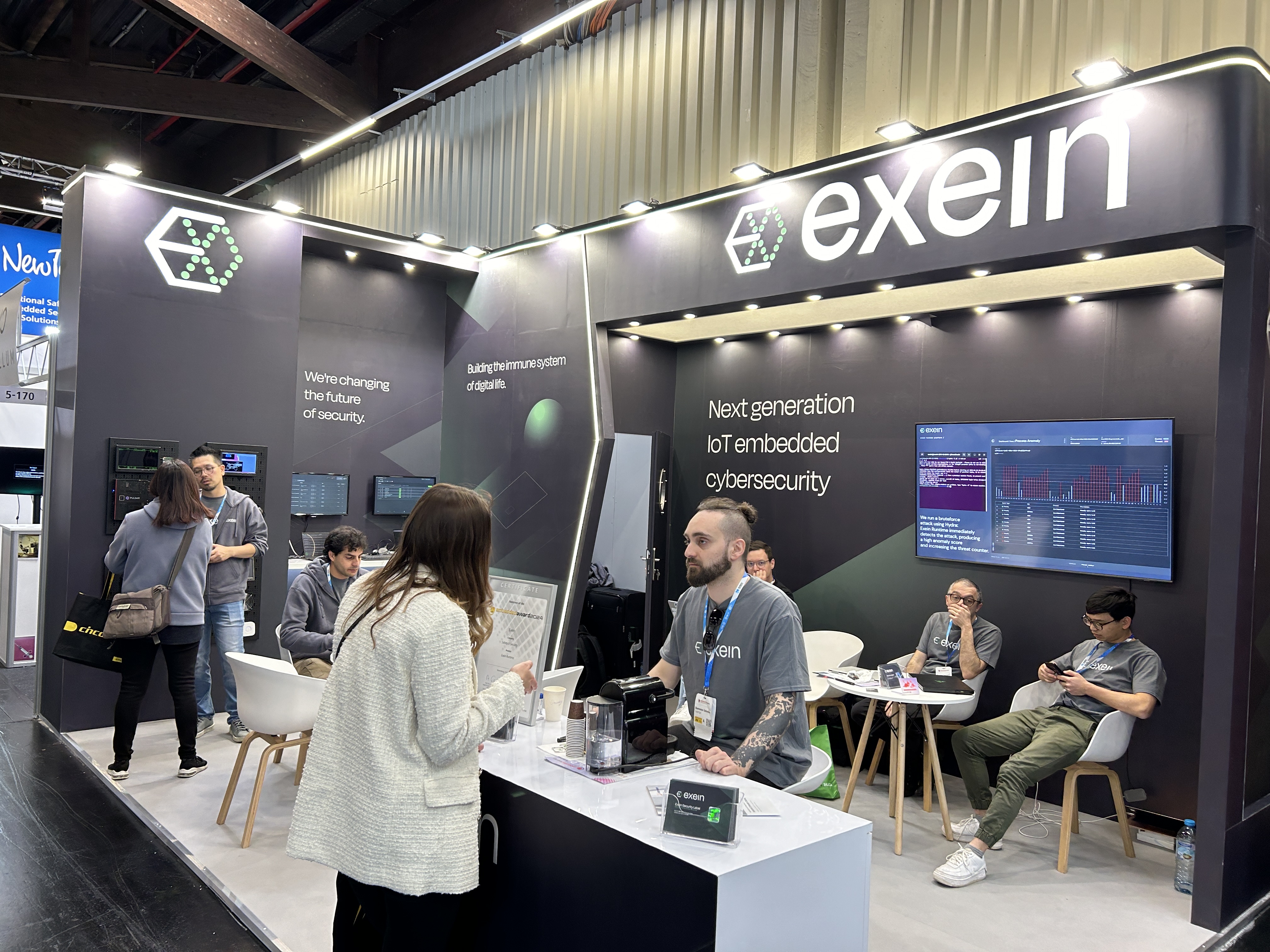
Exein6 is a new startup in the embedded security space. They have built an agent for embedded Linux devices which collects security signal from the device as it is used and uploads it to their cloud for analysis and alerting. And yes, their agent is written in Rust! I think we’ve done too little for too long to secure IoT devices, and am glad to see startups like Exein take up the challenge of IoT security.
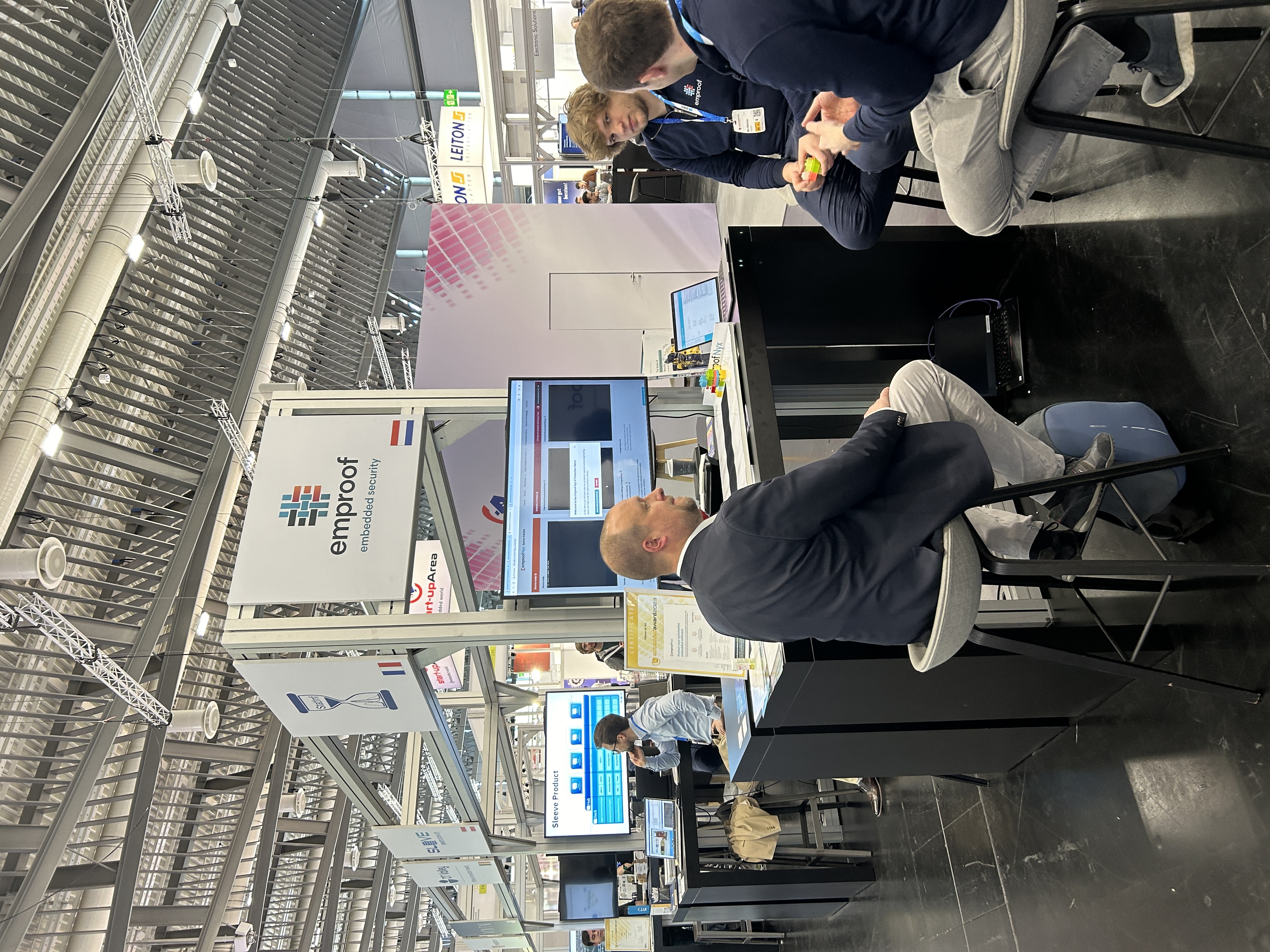
Another security startup, Emproof7 provides firmware hardening services to device makers. Their clever solution scans and rewrites firmware binaries to obfuscate it (preventing reverse engineering) and add security features such as stack guards.
I’ve always been suspicious of security-by-obscurity, the idea that obfuscation will make you safer. But I think the approach of automatically adding security features such as stack guards, address randomization, and others to firmware has a lot of potential.
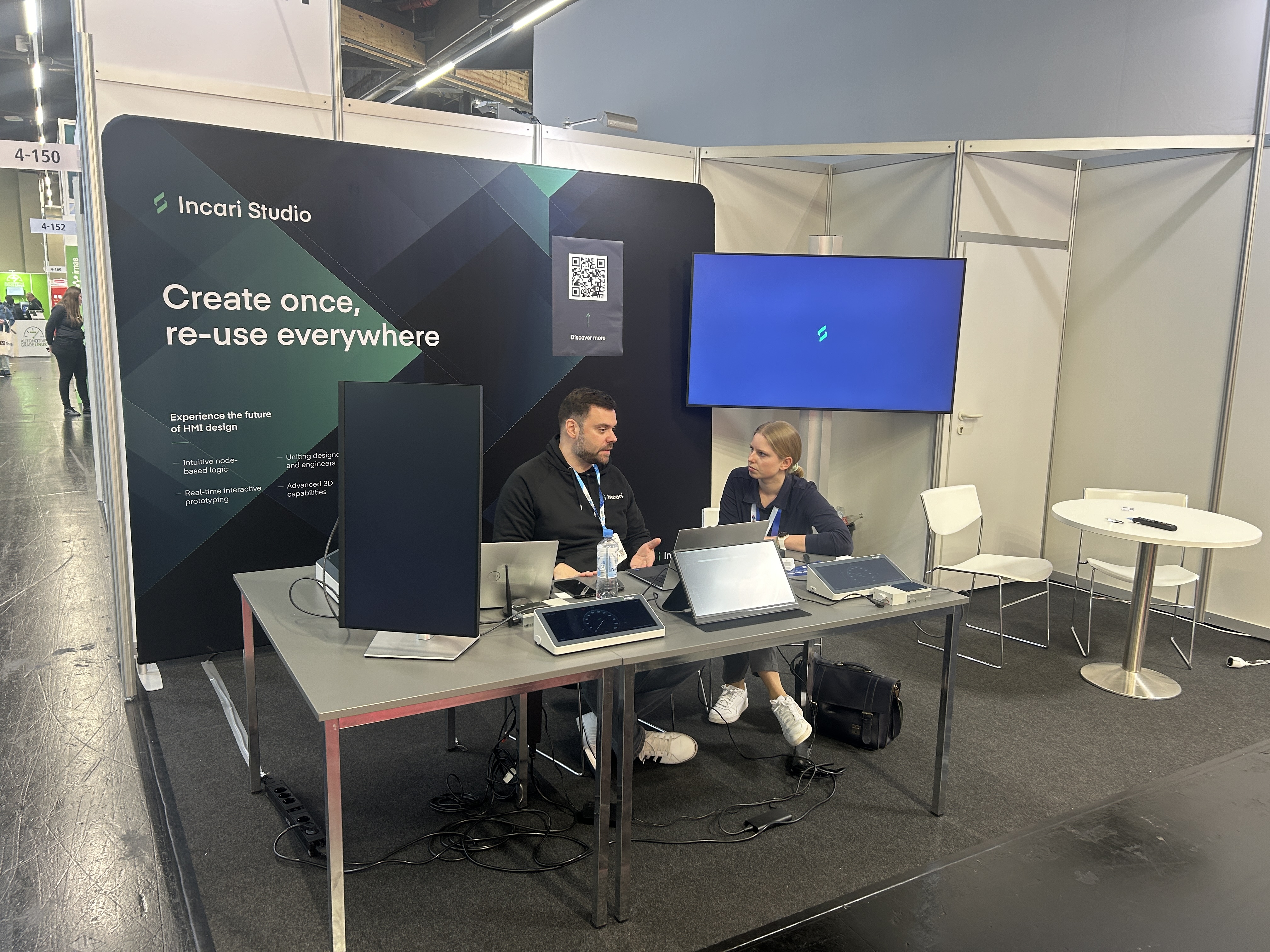
I was surprised by the number of Embedded GUI solutions (they call themselves “Human Machine Interface” - HMI platforms) that exist. Qt of course had a large booth, but so did Embedded Wizards and a long list of others.
One startup in the space stood out to me: Incari8. They have built a GUI editor for hardware (Incari Studio) and an embedded rendering engine which can render those GUIs on limited devices. Incari Studio even has a Figma integration so you can drop a Figma design into its studio, then compile your design directly for your device. That’s a pretty cool workflow! Unlike Qt it won’t work on your MCU, however, as it requires 256MB and a higher level OS (QNX, Linux, …).
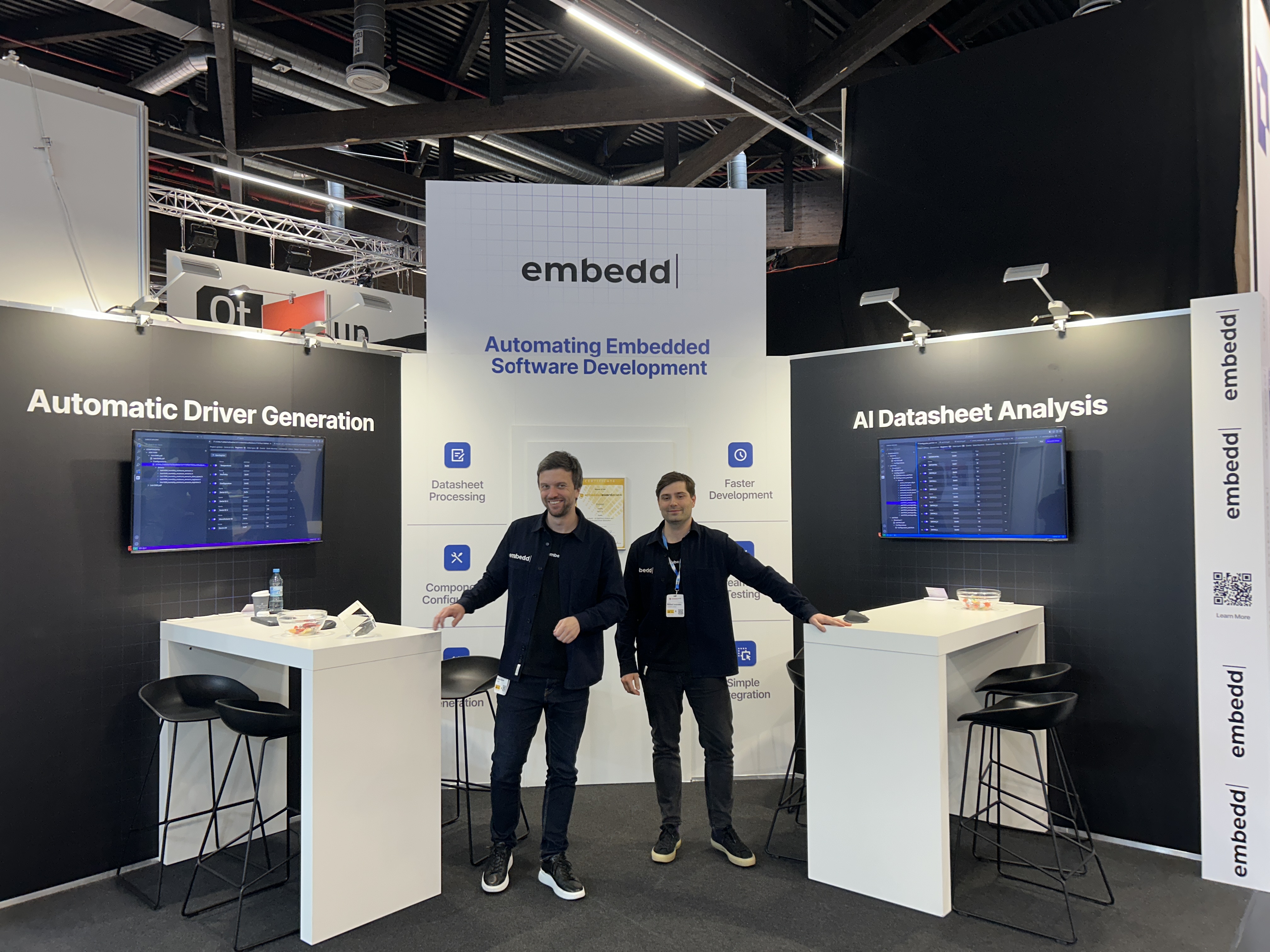
Last but not least, I had a chance to chat with Michael at Embedd9. They have built an AI system that can parse a data sheet provided as PDF and spit out a fully functional driver in C. This feels like a task perfectly suited for AI techniques, and I look forward to trying it out when it goes into general availability. I would be thrilled if I never had to write a driver again!
Conclusion
This was the most exciting Embedded World yet. I got to meet many of our partners and customers, learn about up and coming startups disrupting the industry, and get a pulse on border hardware and software trends. Companies building devices should consider sending an engineer or two.
I look forward to seeing you all there next year. In the meantime, I will be at the brand new Embedded World North America conference in Austin this October!
See anything you'd like to change? Submit a pull request or open an issue on our GitHub

